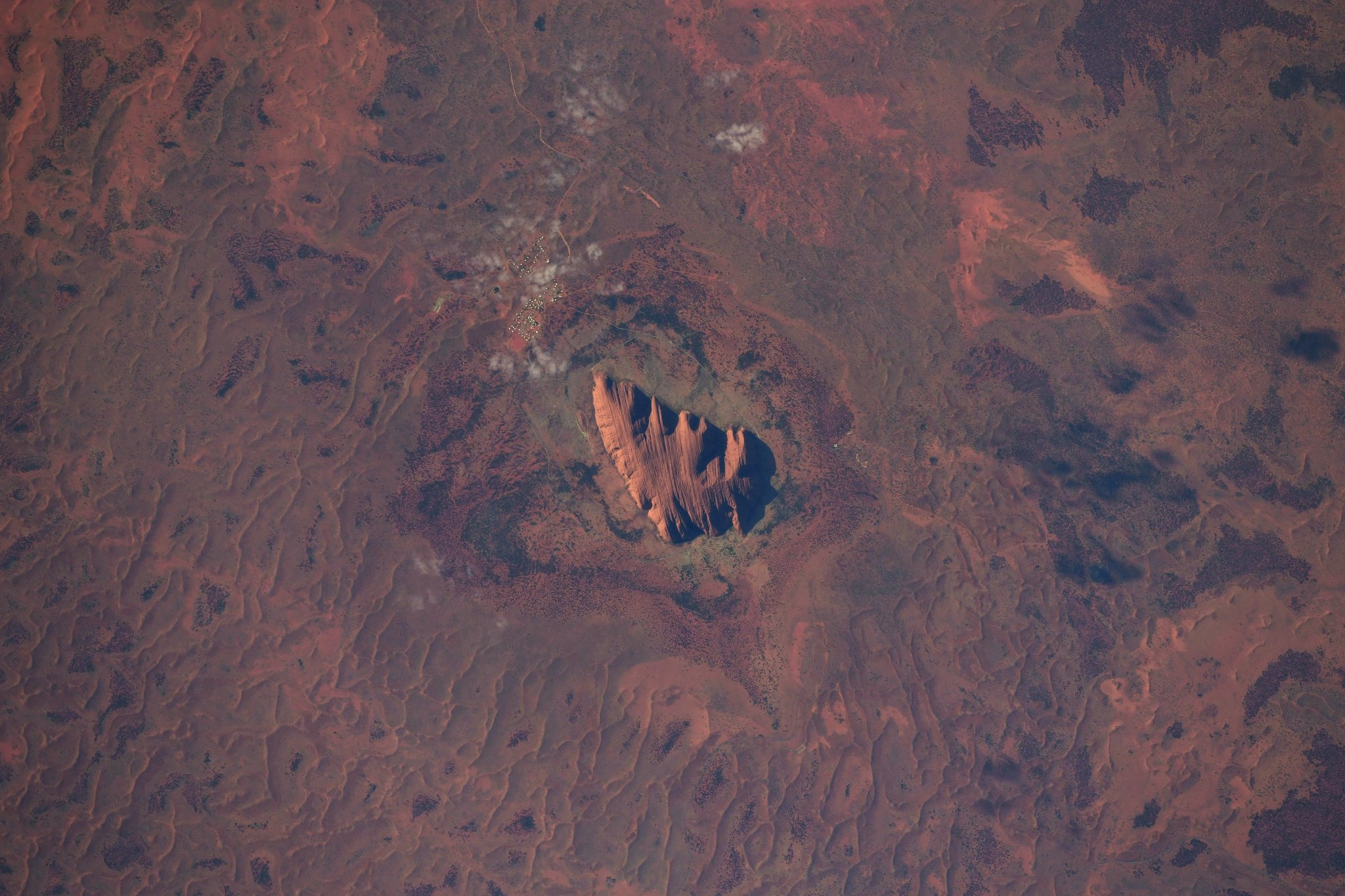[:ja]オレグ・アルテミエフ宇宙飛行士、リッキー・アーノルド宇宙飛行士がISSから撮影したオーストラリア中央部の一枚岩ウルルです。

ウルルはオーストラリア大陸にある世界で2番目に大きい一枚岩です(西オーストラリア州のマウント・オーガスタスが世界最大)。ウルルは先住民であるアボリジニによる呼び名ですが、イギリスの探検家によって名付けられたエアーズロックも広く知られた名称です。4億年前に地殻変動が起こり、砂岩の地層は大きく褶曲して向斜構造となりました。長期にわたる雨や風などにより周囲の土砂は侵食を受けたが、硬い砂岩層は侵食の度合いが少なく地表に突出して表れ、7000万年前にはほぼ現在の姿となったと考えられています。
地上の様子はこちらです。
参考文献: Oleg Artenyev’s Tweet, Ricky Arnold’s Tweet
地球俯瞰画像を見る: LiVEARTH
[Earthview Wonders] No.693: Uluru, Australia🇦🇺
Astronaut Oleg Artemyev and Ricky Arnold captured from ISS Uluru, Australia.

Uluru, also known as Ayers Rock, is a large sandstone rock formation in central Australia, and is one of the country’s most recognisable natural landmarks. The monolith is sacred to the Pitjantjatjara Anangu, the Aboriginal people of the area. The remarkable feature of Uluru is its homogeneity and lack of jointing and parting at bedding surfaces, leading to the lack of development of scree slopes and soil.
The local scenery on the ground is as follows.
Reference: Oleg Artenyev’s Tweet, Ricky Arnold’s Tweet
See earthview photo gallery: LiVEARTH[:en][Earthview Wonders] No.693: Uluru, Australia🇦🇺
Astronaut Oleg Artemyev and Ricky Arnold captured from ISS Uluru, Australia.

Uluru, also known as Ayers Rock, is a large sandstone rock formation in central Australia, and is one of the country’s most recognisable natural landmarks. The monolith is sacred to the Pitjantjatjara Anangu, the Aboriginal people of the area. The remarkable feature of Uluru is its homogeneity and lack of jointing and parting at bedding surfaces, leading to the lack of development of scree slopes and soil.
The local scenery on the ground is as follows.
Reference: Oleg Artenyev’s Tweet, Ricky Arnold’s Tweet
See earthview photo gallery: LiVEARTH[:]